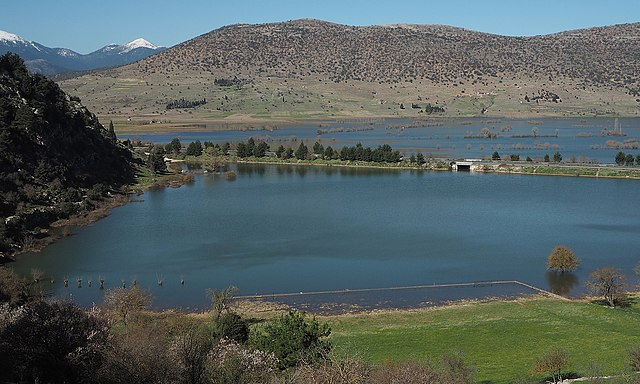Karytaina or Karitaina is a village and a community in Arcadia, Greece. Karytaina is situated on a hill on the right bank of the river Alpheios, near its confluence with the Lousios. The village was situatied where the fort is today in Ancient Vrenthi and dates back to the Ancient Greece. During the Crusader conquest ca. 1205, Karytaina became the seat of a barony under the Frankish Principality of Achaea, and the Castle of Karytaina was built in the mid-13th century on a steep rocky outcrop by Baron Geoffrey of Briel. The area returned to Byzantine control in 1320, and came under Ottoman oppression in 1460. After a brief period of Venetian rule (1687–1715), Karytaina returned to Ottoman control, and prospered as an administrative and commercial centre. Karytaina and its inhabitants were among the first to rise up during the Greek War of Independence of 1821–29. Today Karytaina is a protected traditional settlement and has, alongside the remains of its Frankish castle, several other medieval and Ottoman monuments.

Karytaina
Belltower with the Karytaina Castle in the background
Old tower house
Arcadia is one of the regional units of Greece. It is part of the administrative region of Peloponnese. It is in the central and eastern part of the Peloponnese peninsula. It takes its name from the mythological figure Arcas. In Greek mythology, it was the home of the god Pan. In European Renaissance arts, Arcadia was celebrated as an unspoiled, harmonious wilderness.
Closed Basin Vlacherna/Hotoussa/Kandila
Temporary lake Argon Pedion, March 2019
"Les Bergers d’Arcadie" by Nicolas Poussin.
Landscape of Arcadia.







